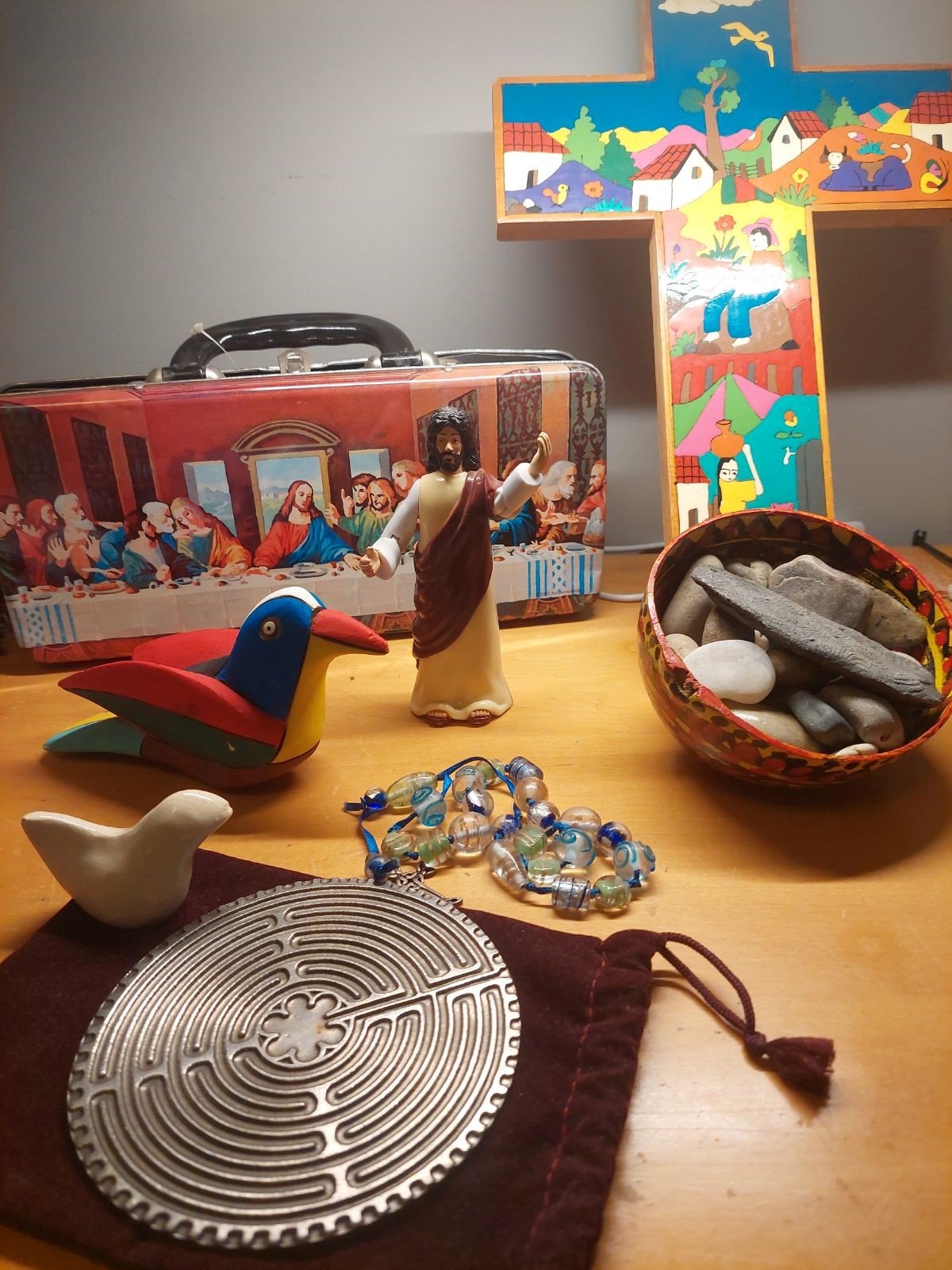A couple of weeks ago I wrote about all my little tchotchkes (definition: a small object that is decorative rather than strictly functional) that have traveled with me and have been on display in my many offices over the years. Items that remind me of special people and moments.
And, there is also all my “Jesus stuff” – action figures, pencil toppers, a bobblehead, sticky notes, a last supper lunchbox … at home I even have a Jesus salt and pepper shaker (don’t worry – if you ever come to dinner at my place, it never appears on the table – it is strictly decorative, way up on a shelf in my home office …).
Perhaps it all seems a bit irreverent to you. Most of them are gifts. When people heard that I was fascinated by my Jesus Action Figure (mostly from a “why? Who thought this was a good idea? Who actually buys this?” perspective) … people started giving me gifts of Jesus stuff that they would come across. Hence the collection - that I really don’t know what to do with now, except write blogs about them, and sometimes bring an item to meetings for reflection.
Yesterday, we (well, mostly Dana and Jimmy) got a few posters up in my office. Posters that I have collected over the years. Many are from a curriculum that was popular about 20 years ago called Seasons of the Spirit. Every unit came with a set of posters, and each poster has information about the artist and a short reflection about the image. They were beautiful, thought provoking, and very conversational.
Many were paintings and portraits of Jesus over the years.
Just as how I reflected last week about it making sense to me that different people would imagine God in many different ways, I think that it makes sense that folks would imagine Jesus in many different ways. In fact, scholars point out that Jesus would have been a much darker skinned man than many white people in the world have pictured. So I also was intrigued to find many images of Jesus in this poster collection.
Images from many different cultures and contexts – indigenous, black, young, old, rich, or poor, or even Jesus laughing. Images through the ages.
For example, try googling “Christ of the Breadline” or “Jesus laughing”.
Part of my collection is a poster from the Student Christian Movement (SCM). For those of you that don’t know about SCM, it is a 100 year old grass led network, passionate about justice, community in diversity, and radical faith in action. SCM still exists on many campuses across Canada and the world. (see scmcanada.org)
The poster was created many years ago when the Student Christian Movement of Canada had a talented and clever artist as one of their National Directors. The poster goes through the whole alphabet, with a little cartoon and a caption for each letter, each one based on a story about Jesus. I have used the poster many times as a Bible study, especially with youth and young adults.
I even laminated and cut one poster up into puzzle pieces, and as we put the pieces together we talk about all the different stories of Jesus.
It starts out … A is for Activist … the caption says “Jesus stirred up trouble in the streets …” B is for Black; “Jesus was from Palestine, so the odds of him looking like the blue-eyed, brown-haired guy on the wall of your Sunday School class are pretty slim.” C of course … is for Carpenter. “Jesus worked most of his life in an average Joe job.”
D … Displaced. “Jesus was a refugee. This is Jesus and his family running away to Egypt because Herod was killing all the babies.”
Many of the youth like Q … for queer positive, with the caption “Jesus liked to hang out with the marginalized and oppressed”, with a bubble near Jesus saying, “Hi, I’m Jesus, wanna go for coffee?”
In the gospel of Mark, chapter 8, Jesus asks his disciples “Who do others say I am?”, and, “Who do you say I am?” The exchange between Jesus and his disciples implies that who others say Jesus is may not always be who you say Jesus is.
We get to know Jesus by getting to know how he lived his life, who he hung out with, how he treated people, what he taught.
How do you think about Jesus? Who do you say he is? If you want some help thinking about it, drop by my office sometime.








